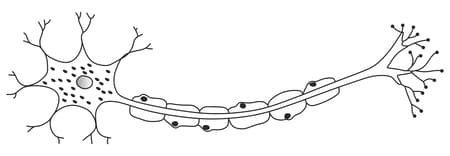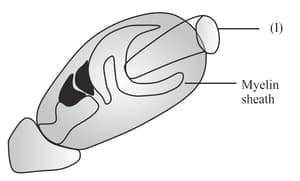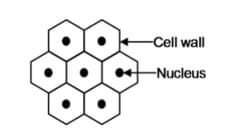MEDIUM
Earn 100
Draw and identify different elements of phloem.
Important Questions on Use argument supported by evidence for how the body is a system of interacting subsystems composed of groups of cells.
MEDIUM
Life Sciences>From Molecules to Organisms: Structures and Processes>Use argument supported by evidence for how the body is a system of interacting subsystems composed of groups of cells.>Structure and Function - In multicellular organisms, the body is a system of multiple interacting subsystems. These subsystems are groups of cells that work together to form tissues and organs that are specialized for particular body functions.
MEDIUM
Life Sciences>From Molecules to Organisms: Structures and Processes>Use argument supported by evidence for how the body is a system of interacting subsystems composed of groups of cells.>Structure and Function - In multicellular organisms, the body is a system of multiple interacting subsystems. These subsystems are groups of cells that work together to form tissues and organs that are specialized for particular body functions.
EASY
Life Sciences>From Molecules to Organisms: Structures and Processes>Use argument supported by evidence for how the body is a system of interacting subsystems composed of groups of cells.>Structure and Function - In multicellular organisms, the body is a system of multiple interacting subsystems. These subsystems are groups of cells that work together to form tissues and organs that are specialized for particular body functions.
Redraw the diagram. Name and label the parts indicated, below,

Carries impulses away from the cell body
MEDIUM
Life Sciences>From Molecules to Organisms: Structures and Processes>Use argument supported by evidence for how the body is a system of interacting subsystems composed of groups of cells.>Structure and Function - In multicellular organisms, the body is a system of multiple interacting subsystems. These subsystems are groups of cells that work together to form tissues and organs that are specialized for particular body functions.
(i) excretion in Amoeba.
(ii) excretion in Earthworm.
MEDIUM
Life Sciences>From Molecules to Organisms: Structures and Processes>Use argument supported by evidence for how the body is a system of interacting subsystems composed of groups of cells.>Structure and Function - In multicellular organisms, the body is a system of multiple interacting subsystems. These subsystems are groups of cells that work together to form tissues and organs that are specialized for particular body functions.
Give appropriate biological or technical terms for the following:
The relaxation phase of the heart.
MEDIUM
Life Sciences>From Molecules to Organisms: Structures and Processes>Use argument supported by evidence for how the body is a system of interacting subsystems composed of groups of cells.>Structure and Function - In multicellular organisms, the body is a system of multiple interacting subsystems. These subsystems are groups of cells that work together to form tissues and organs that are specialized for particular body functions.
MEDIUM
Life Sciences>From Molecules to Organisms: Structures and Processes>Use argument supported by evidence for how the body is a system of interacting subsystems composed of groups of cells.>Structure and Function - In multicellular organisms, the body is a system of multiple interacting subsystems. These subsystems are groups of cells that work together to form tissues and organs that are specialized for particular body functions.
EASY
Life Sciences>From Molecules to Organisms: Structures and Processes>Use argument supported by evidence for how the body is a system of interacting subsystems composed of groups of cells.>Structure and Function - In multicellular organisms, the body is a system of multiple interacting subsystems. These subsystems are groups of cells that work together to form tissues and organs that are specialized for particular body functions.
Observe the given diagram and read the following statements.
(i) These are cells of collenchyma tissue.
(ii) At maturity these cells lose their nucleus and cytoplasm.
(iii) The cells are living and thick at their corners.
(iv) This tissue gives flexibility to plant parts.
Correct statements are:
EASY
Life Sciences>From Molecules to Organisms: Structures and Processes>Use argument supported by evidence for how the body is a system of interacting subsystems composed of groups of cells.>Structure and Function - In multicellular organisms, the body is a system of multiple interacting subsystems. These subsystems are groups of cells that work together to form tissues and organs that are specialized for particular body functions.
EASY
Life Sciences>From Molecules to Organisms: Structures and Processes>Use argument supported by evidence for how the body is a system of interacting subsystems composed of groups of cells.>Structure and Function - In multicellular organisms, the body is a system of multiple interacting subsystems. These subsystems are groups of cells that work together to form tissues and organs that are specialized for particular body functions.
EASY
Life Sciences>From Molecules to Organisms: Structures and Processes>Use argument supported by evidence for how the body is a system of interacting subsystems composed of groups of cells.>Structure and Function - In multicellular organisms, the body is a system of multiple interacting subsystems. These subsystems are groups of cells that work together to form tissues and organs that are specialized for particular body functions.
Observe the picture and answer the following question

Name the part indicated as (i).
EASY
Life Sciences>From Molecules to Organisms: Structures and Processes>Use argument supported by evidence for how the body is a system of interacting subsystems composed of groups of cells.>Structure and Function - In multicellular organisms, the body is a system of multiple interacting subsystems. These subsystems are groups of cells that work together to form tissues and organs that are specialized for particular body functions.
A) The female sex organs of Angiosperms are called strobilus.
B) The fusion of motile male gamete with non-motile egg is called zooidogamy.
C) Some algae are in association with animals.
D) Archegonium is flank shaped male sex organ with single cell.
EASY
Life Sciences>From Molecules to Organisms: Structures and Processes>Use argument supported by evidence for how the body is a system of interacting subsystems composed of groups of cells.>Structure and Function - In multicellular organisms, the body is a system of multiple interacting subsystems. These subsystems are groups of cells that work together to form tissues and organs that are specialized for particular body functions.
A. Made up of dead cells
B. Have very little intercellular space
C. Cells are irregularly thickened at the corners
D. Cell wall contains lignin
MEDIUM
Life Sciences>From Molecules to Organisms: Structures and Processes>Use argument supported by evidence for how the body is a system of interacting subsystems composed of groups of cells.>Structure and Function - In multicellular organisms, the body is a system of multiple interacting subsystems. These subsystems are groups of cells that work together to form tissues and organs that are specialized for particular body functions.
EASY
Life Sciences>From Molecules to Organisms: Structures and Processes>Use argument supported by evidence for how the body is a system of interacting subsystems composed of groups of cells.>Structure and Function - In multicellular organisms, the body is a system of multiple interacting subsystems. These subsystems are groups of cells that work together to form tissues and organs that are specialized for particular body functions.
MEDIUM
Life Sciences>From Molecules to Organisms: Structures and Processes>Use argument supported by evidence for how the body is a system of interacting subsystems composed of groups of cells.>Structure and Function - In multicellular organisms, the body is a system of multiple interacting subsystems. These subsystems are groups of cells that work together to form tissues and organs that are specialized for particular body functions.
EASY
Life Sciences>From Molecules to Organisms: Structures and Processes>Use argument supported by evidence for how the body is a system of interacting subsystems composed of groups of cells.>Structure and Function - In multicellular organisms, the body is a system of multiple interacting subsystems. These subsystems are groups of cells that work together to form tissues and organs that are specialized for particular body functions.
EASY
Life Sciences>From Molecules to Organisms: Structures and Processes>Use argument supported by evidence for how the body is a system of interacting subsystems composed of groups of cells.>Structure and Function - In multicellular organisms, the body is a system of multiple interacting subsystems. These subsystems are groups of cells that work together to form tissues and organs that are specialized for particular body functions.
EASY
Life Sciences>From Molecules to Organisms: Structures and Processes>Use argument supported by evidence for how the body is a system of interacting subsystems composed of groups of cells.>Structure and Function - In multicellular organisms, the body is a system of multiple interacting subsystems. These subsystems are groups of cells that work together to form tissues and organs that are specialized for particular body functions.
EASY
Life Sciences>From Molecules to Organisms: Structures and Processes>Use argument supported by evidence for how the body is a system of interacting subsystems composed of groups of cells.>Structure and Function - In multicellular organisms, the body is a system of multiple interacting subsystems. These subsystems are groups of cells that work together to form tissues and organs that are specialized for particular body functions.


